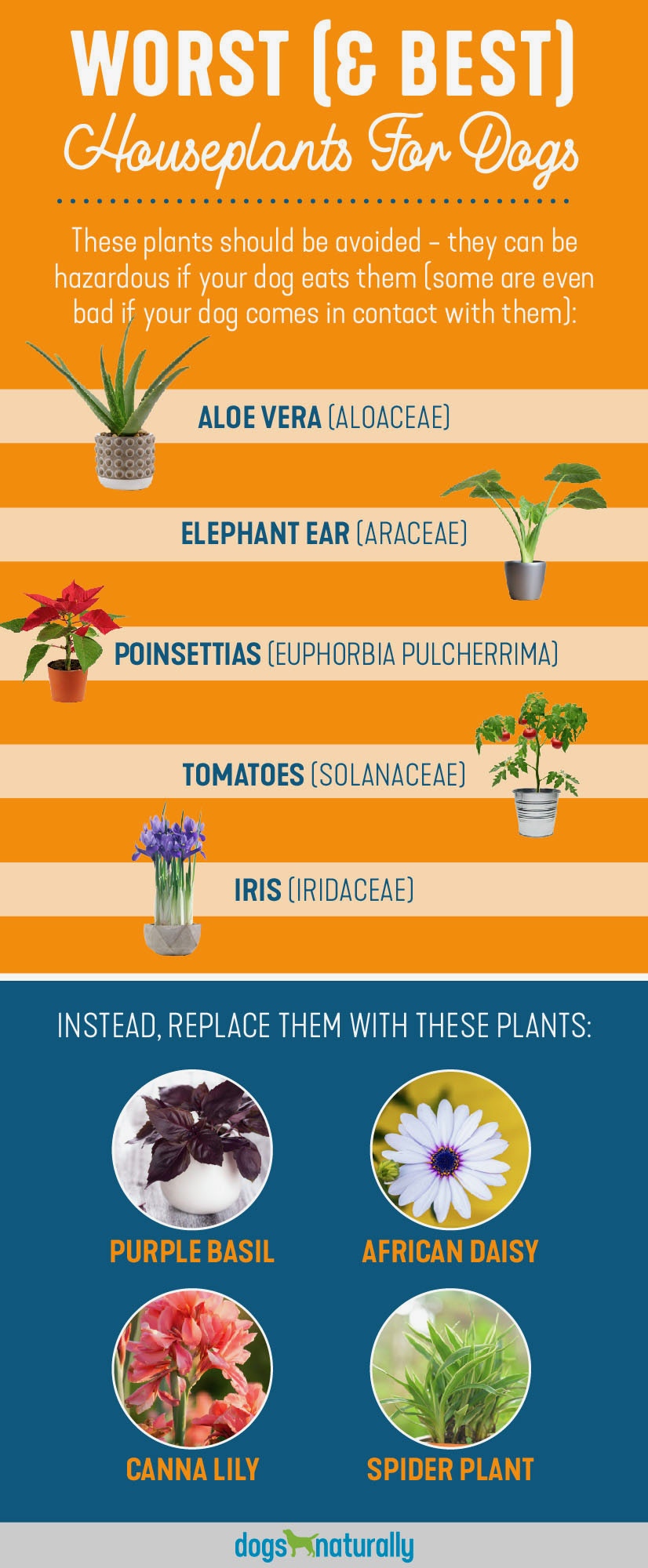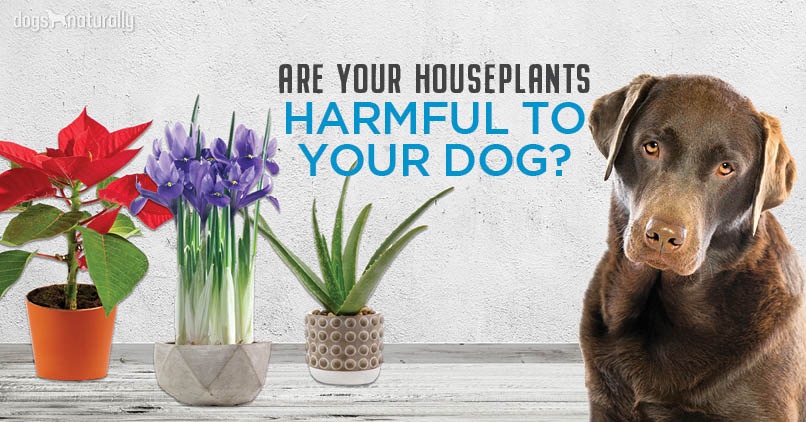As pet owners, it’s our responsibility to keep our dogs safe and provide them with a safe environment to live in. Many of us keep household plants – they’re good for indoor air after all. Maybe you even have a garden in your yard.
But are the plants you’ve chosen hazardous to your dog’s health? There are some very common poisonous plants for dogs found in our homes or gardens. Many pet owners are unaware that such common plants can cause severe illnesses to dogs.
So, which ones are safe and which ones should you get rid of? Here are 5 common plants that are poisonous to dogs (plus 4 you can replace them with).
5 Common Poisonous Plants For Dogs
1. Aloe Vera (Aloaceae)
Aloe Vera is probably one of the most common household plants. These plants don’t require much maintenance. They CAN be very beneficial for us as pet owners.
Externally, aloe has many benefits to dogs. These benefits include:
- Anti-inflammatory
- Promotes healing
- Alleviates allergic reactions
However, aloe contains certain properties that can be a problem. These exist in the aloe latex, the yellow sappy part under the rind. This latex contains a natural chemical called aloin. In large enough quantities, aloin can irritate the intestines and cause electrolyte loss.
- Toxicity Level
- Mild to Moderate
- Warning signs to look for:
- Vomiting
- Diarrhea
- Depression
- Changes in color of urine
- Tremors (which is rare)
- Anorexia (or loss of appetite)
2. Elephant Ear (Araceae)
Elephant ears belong to the Araceae family. These plants are filled with calcium oxalate crystals that are insoluble. Any time this plant is chewed on or bitten into, crystals are released.
These crystals get into tissue and will irritate the mouth and gastrointestinal tract. In rare cases, the upper airway will become swollen. This makes breathing extremely difficult.
- Toxicity Level
- Mild to moderate
- Warning signs to look for:
- Drooling
- Pawing or messing with their mouth
- Oral pain
- Loss of
appetite Vomiting
3. Poinsettias (Euphorbia Pulcherrima)
Poinsettias are a popular plant, especially during the holiday season. Their lush, red leaves make the perfect decoration. But these plants have a bad reputation, and when it comes to our dogs, it isn’t undeserved.
If your dog eats them, poinsettias can give generally mild signs of illness. When exposed to the skin, the milky sap of this plant can cause irritation, swelling and itchiness.
- Toxicity Level
- Mild
- Warning signs to look for:
- Drooling
- Licking lip
- Vomiting
- Diarrhea
- Skin irritation, redness, swelling or itchiness
- Eye irritation
4. Tomatoes (Solanaceae)
Yes, tomatoes! Many of us like to grow our own plants, herbs and vegetables. And that usually includes tomatoes.
Now, let me be clear when I state that the tomato itself is not poisonous to your dog.
However, those beautiful green, leafy vines that the tomatoes grow on are. Those contain a property called solanine. This is found in many other plants from the Solanaceae family.
Solanine is only found in the green parts of the plant. For this to cause severe poisoning for your dog, she would need to ingest a lot of it. But even some ingestion of this plant can cause severe gastrointestinal issues.
- Toxicity Level
- Moderate
- Warning signs to look for:
- Lethargy
- Confusion
- Weakness
- Diarrhea
- Vomiting
5. Iris (Iridaceae)
Iris is a common plant used in household gardens. It’s also known as the bearded iris, snake lily, yellow flag, yellow water iris or Western blue flag.
And although they’re not likely to cause death, they can cause issues if they’re eaten or touched. Irritation can occur just from handling or touching these plants.
Most of the compounds that cause irritation are the most potent in the bulb of the plant.
- Toxicity Level
- Mild to moderate
- Warning signs to look for:
- Lethargy
- Drooling
- Vomiting
- Diarrhea

**Update: More Plants That Are Toxic To Dogs
When we first published this post, we got a lot of questions about other plants, so we thought we’d add to the list.
Here are more plants that are toxic to dogs:
- Begonias
- Azaleas
- Hostas
- Chrysanthemums
- Ivy
- Morning Glory
- Carnations
- Tulips
4 Dog-Friendly Plants
Just as there are many poisonous plants for dogs, there are a few alternatives that are
1. Purple Basil
Not only is it pretty to look at, this plant is completely harmless to your dog. In fact, this plant has many health benefits. If your dog happens to eat them, she’ll reap the benefits!
Here are just a few of the benefits of basil:
- Anti-inflammatory properties
- Antioxidant
- Pain and fever reducer
- Fights cancer
- Prevents diabetes
- Protects the liver
- Immune boosting
- Anti-stress
[Related]There are several herbs that you can add to your dog’s diet to boost her health.
2. African Daisy
This flower is part of the sunflower/daisy family (Asteraceae). If you enjoy flowers in your garden and around your house, the African daisy is a safe alternative. These flowers are bright and yellow in color. They pose zero threat to your dog if she decides to eat them for a snack.
3. Canna Lily
This is another low maintenance plant which is very easy to grow. They offer perennial color without potentially threatening your dog’s health.
Just pay attention when you’re shopping for lilies. There are MANY types of lilies that are highly toxic to dogs and cause serious danger for cats, including:
- Peace lily
- Calla lily
- Lily of the valley
- Autumn crocus
- Amaryllis
- Palm lily
4. Spider Plant
One great thing about the spider plant is it’s safe for ALL PETS. We all know dogs love to eat things, whether they’re harmful or not. The spider plant is no exception to this rule.
Dogs tend to be very fond of the taste of these plants and are likely to chew or eat them. However, this is a better alternative because of their non-toxicity.
Note: If your dog ingests enough of the spider plant, it can cause vomiting. However, this is more of an upset stomach issue rather than a toxic reaction.
Research Before Bringing New Plants Home
If you happen to have one of these poisonous plants for dogs in your house, it’s best to rehome it.
Also, when you visit your local plant












